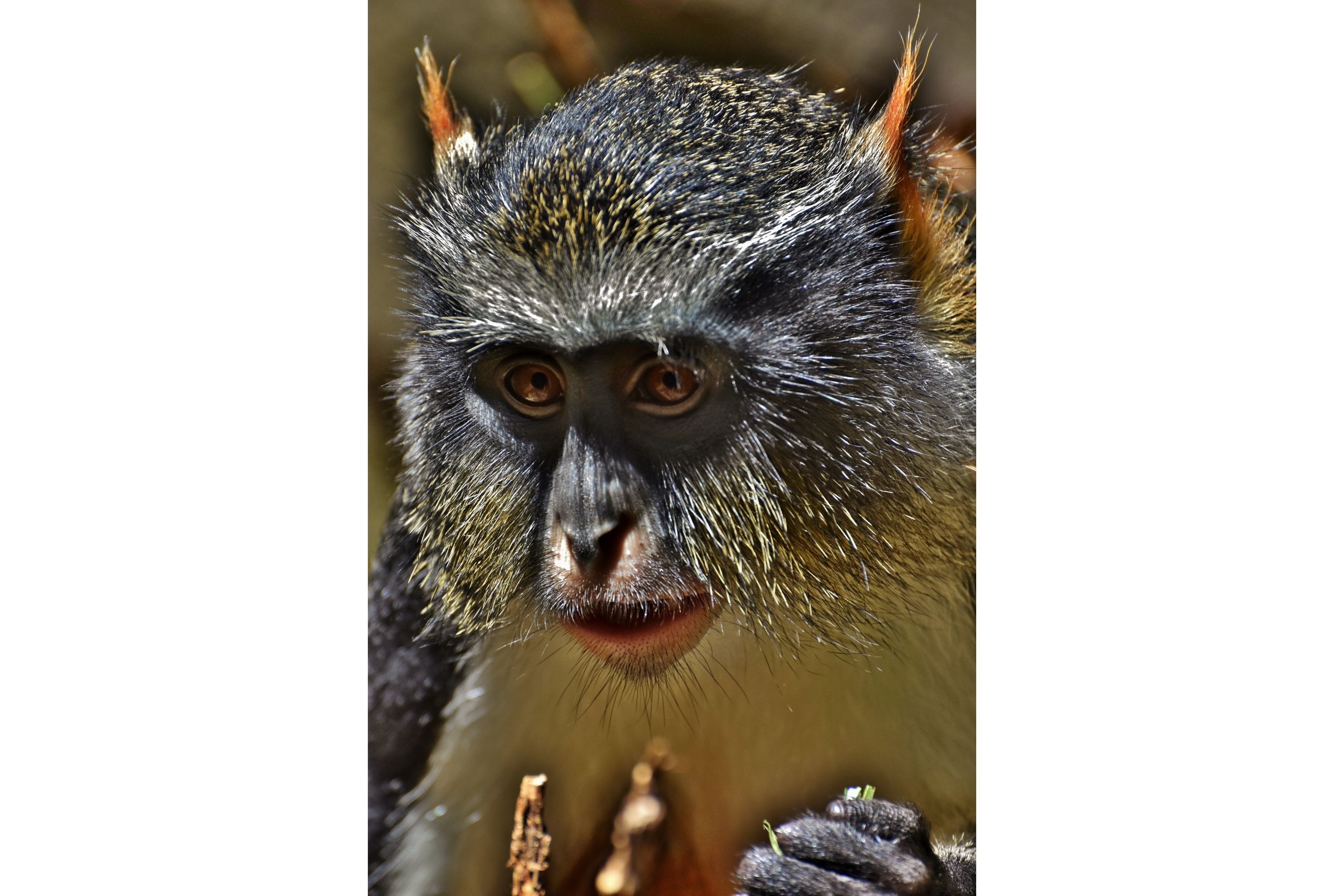Wolf's mona monkey
(Cercopithecus wolfi)

Description
Wolf's mona monkey (Cercopithecus wolfi), also called Wolf's guenon, is a colourful Old World monkey in the family Cercopithecidae. It is found in central Africa, primarily between the Democratic Republic of the Congo and Uganda. It lives in primary and secondary lowland rainforest and swamp forest. The species was first described from a living specimen in the Zoological Garden at Dresden. It was brought in 1887 by Dr Ludwig Wolf from somewhere in central west Africa. The species was described in 1891 and named after the collector. This specimen died in October 1891 and the skeletal characteristics were described in 1894. Guenons, the largest group of African primates, are very colorful. Their color is used in intraspecific communication for recognizing individuals, species, and potential mates. Wolf's mona monkey is dark grey with a red "saddle" on its back. The pelage depends on the subspecies. C. wolfi wolfi has a chestnut-colored patch on the middle of its back. Its arms are black and legs are red. It has a yellow underside, occasionally with an orange stripe down its flanks. Its cheek whiskers are yellow, speckled with black, and its ear tufts are red. C. wolfi elegans has a back which is gradually browner towards the rump. Its forearms are black, and its upper arms have a pale speckling. Its legs are light gray, while its underside is white. Its cheek whiskers are white, with dark speckling that increases near the base. Its ear tufts are white. The male's scrotum is blue. Wolf's mona monkey is also sexually dimorphic in size. Males weigh, on average, almost twice as much as females, 4.5 kilograms (10 lb) and 2.5 kilograms (5.5 lb) respectively. Its small size makes it susceptible to predators, especially the crowned eagle and the leopard. The diet of Wolf's mona monkey differs depending on location. Although predominantly a frugivore, it may also forage for seeds and insects for protein. Since it has no adaptations for leaf eating, its leaf diet mainly consists of young and easily digestible leaves. The birth season for Wolf's mona monkey is from June through December due to rainfall and resource availability. It lives in a single male/multi-female group. It is female philopatric, with males dispersing from the group at sexual maturity. Because one male controls several females there is extreme competition for the alpha male position. Females, on the other hand, are generally amicable and participate in grooming and allomothering.
Taxonomic tree:







